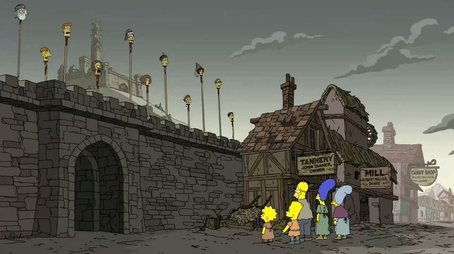
Sorry, we have not watched this yet.

In a magical medieval world, Marge's mother is turned into an Ice Walker and the only way for Homer to afford the cure is to force Lisa to use illegal magic. When the King discovers this, he kidnaps Lisa, and Homer must lead a feudal uprising to save her.
Sorry, we have not watched this yet.